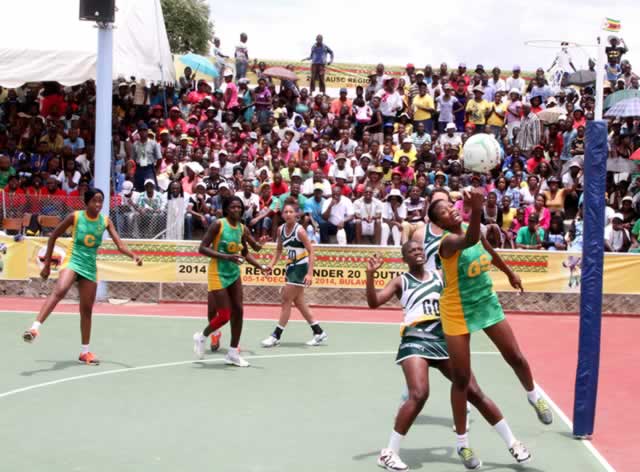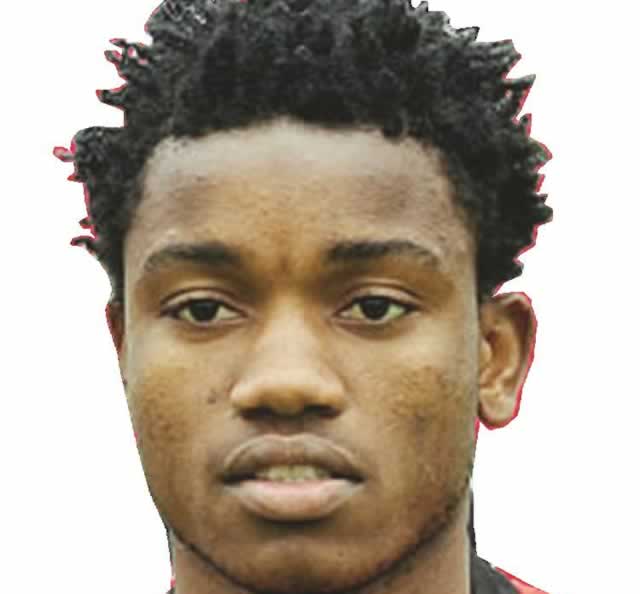IT’S about the Youth Games

Nkosilathi Sibanda and Ricky Zililo Sports Reporters
THE African Union Sports Council Region 5 Youth Games have made the week a memorable one for Bulawayo. It’s been a long week yet sport lovers in the city are still hungry for more.
The big excitement among Bulawayo residents, even those who are not soccer fans, is an indication that Zimbabweans like to unite behind their national sports teams.
One fascinating thing about Games of such magnitude is the celebratory mood that fills the space. No matter where you go around Bulawayo, you will engage in the conversation.
The reaction was expected, given that Bulawayo had long yearned to host high profile events. When it became known that the Games would be hosted in the city, there has been a gradual fever pitch enthusiasm.
From a fan’s perspective, the AUSC Games were largely a great success, with everything running relatively smooth.
The ambience that filled Barbourfields Stadium at the official opening ceremony on Sunday was enough to foresee a week of true patriotism. This extends to the multicultural feel of the sporting extravaganza.
True to their family values, Zimbabweans across the divide came with their children, elderly and spouses to witness the grandeur of sporting excellence.
Barbourfields Stadium, with its association with football, has long been shunned by some who viewed it as a place of violence — largely due to hooliganism.
That view shifted as people broke their vow of not stepping into Emagumeni. Holding tiny national flags, they roared in ululation, danced in unison and chanted.
So why were these Games captivating?
The AUSC Region 5 Youth Games provided a healthy escape from the ups and downs of life. In a city that faces a host of challenges, the Games were the tonic.
Switching gears and focusing on the sporting extravaganza provided relief and perspective. Scenes from the opening ceremony depict sport as an unrivalled social code that unites people in their deepest diverse existence.
Artistes that performed at BF mirrored Bulawayo as both a cultural and sporting capital. The city is a dome of talent and exuberance.
Since the 1995 All Africa Games, Bulawayo had never hosted as many countries participating in more than one sporting event.
The multi-racial and cultural scene was a preserve of those who had been to the 2010 Fifa World Cup in South Africa. Ten countries with more than 1,000 athletes gave residents a cosmopolitan affair.
Children of school going age could be heard greeting visitors in Portuguese, Nyanja and Setswana. At some point, South African athletes were seen chatting to locals as if they had known each other for long.
Of the crowds that came in full support of the athletes, none could have surpassed the attendance at White City.
The residents of nearby suburbs such as Mabutweni, Iminyela famously known as Number 1, Pelandaba, Mpopoma and Njube were awestruck on seeing the facelift. Never in their lives did they imagine White City turning into a “wonder.”
They had been accustomed to a stadium that hosts music shows for the Soul Brothers and Dan Tshanda. The only chance to watch sport at White City came with flashes of Division One football or the annual primary schools athletics.
Now, there is some degree of pride to live in Mabutweni and Number 1. Vice associated with the area will soon be a perception of the past. Younger generations look forward to building sporting careers there. The vicinity in one of Bulawayo’s oldest neighbourhoods now presents potential, thanks to the colourful scenery and world class equipment around the athletics arena.
From last Monday, it looked like the whole city was at a standstill except for White City. Despite the pounding rains in open stadia, the home crowd was souring at other venues. It was better to be rained on than miss the opportunity of a lifetime.
At City Hall, the boxing venue was full to capacity that organisers could not account for the figures. Even Kennedy Ndebele, in charge of marketing of the Games, was seen shaking his head in ironic acknowledgement of an event well attended.
“I failed to find a seat or to get a glimpse of the action. The boxing arena was packed. The people of Bulawayo were making joyful noises. Others dared coming with three-year-old kids in a fully packed venue, that is pure excitement seriously,” Ndebele said before dashing to another venue, albeit without luck of finding a seat again.
Another crowd puller were the swimmers at the Bulawayo Pool. Who thought swimming was a popular sport? For long, the sport has been a privilege of a minority but with the AUSC Region 5 Youth Games, the story read differently.
On the first day, police had to disperse the crowds to other venues. The spectator stands at Bulawayo Pool accommodated a few.
Was it because of the Youth Games that Zimbabweans revealed a shocking liking for sports such as swimming, tennis, basketball and netball?
No sport code is bigger than the other. If you thought football is the biggest sport, think again because the AUSC Region 5 Under-20 Youth Games are testimony that all codes are equal.
“We’ve never watched as many sports at once. We know of all other sporting disciplines and we support the national teams. This time the teams were in our backyard, we were physically on the ground. If local teams start using Bulawayo facilities, the support will remain the same,” said Mxolisi Nyambosi in the company of his wife and two children at Bulawayo Swimming Pool on Friday.
These Games changed the way Zimbabweans viewed organised sports.
Parents and sport coaches might start to introduce children to sports early in life, train them hard, and push then to specialise in sport early.
The AUSC Region 5 Games also showed the influence of youth sport culture and how it can help grow athletic potential and educational hopes.
It was refreshing to see Highlanders coach Mark Mathe among the basketball crowd at ZITF, probably to refresh after a taxing season that saw the Bulawayo giants ending the season a disappointing fifth.
Former footballers Zenzo Moyo, Desmond Maringwa, Paul Gundani and Herbert Dick enjoyed every minute of basketball.
The euphoria at the ZITF has been amazing as it brought action-starved basketball lovers out of their shells.
Maybe a challenge for these so-called minority sport administrators is to make the most out of the hype created by the Games and make themselves visible to the public.









Comments